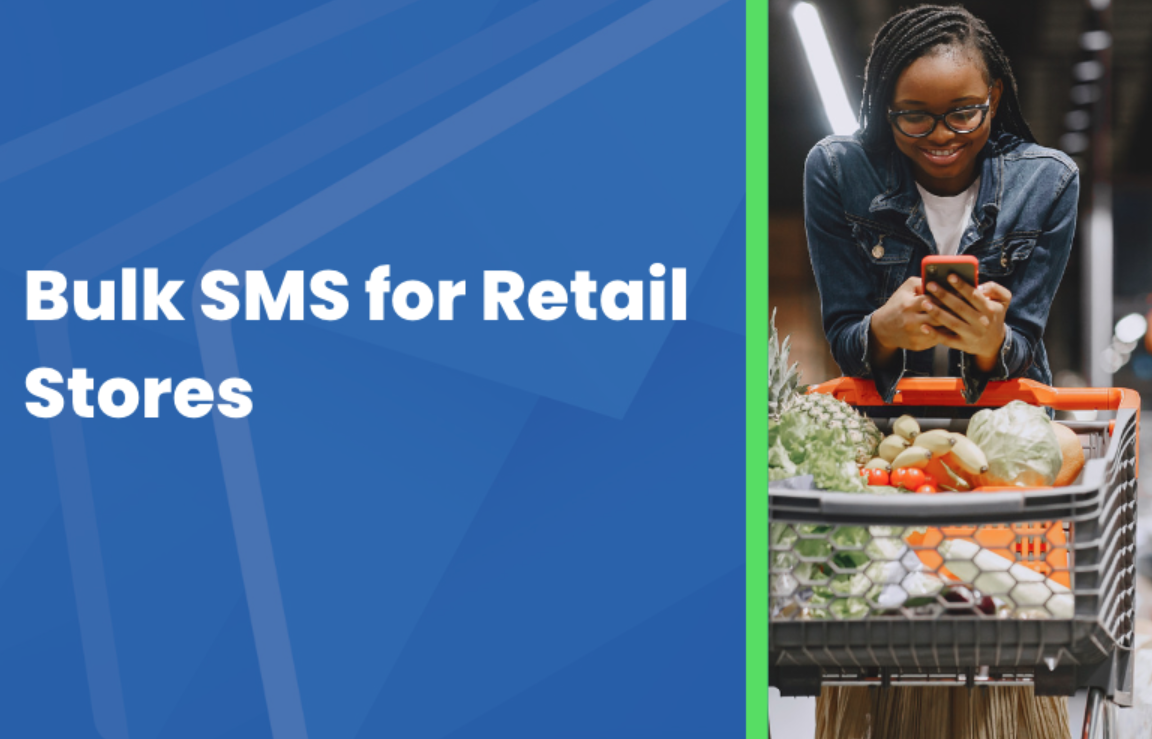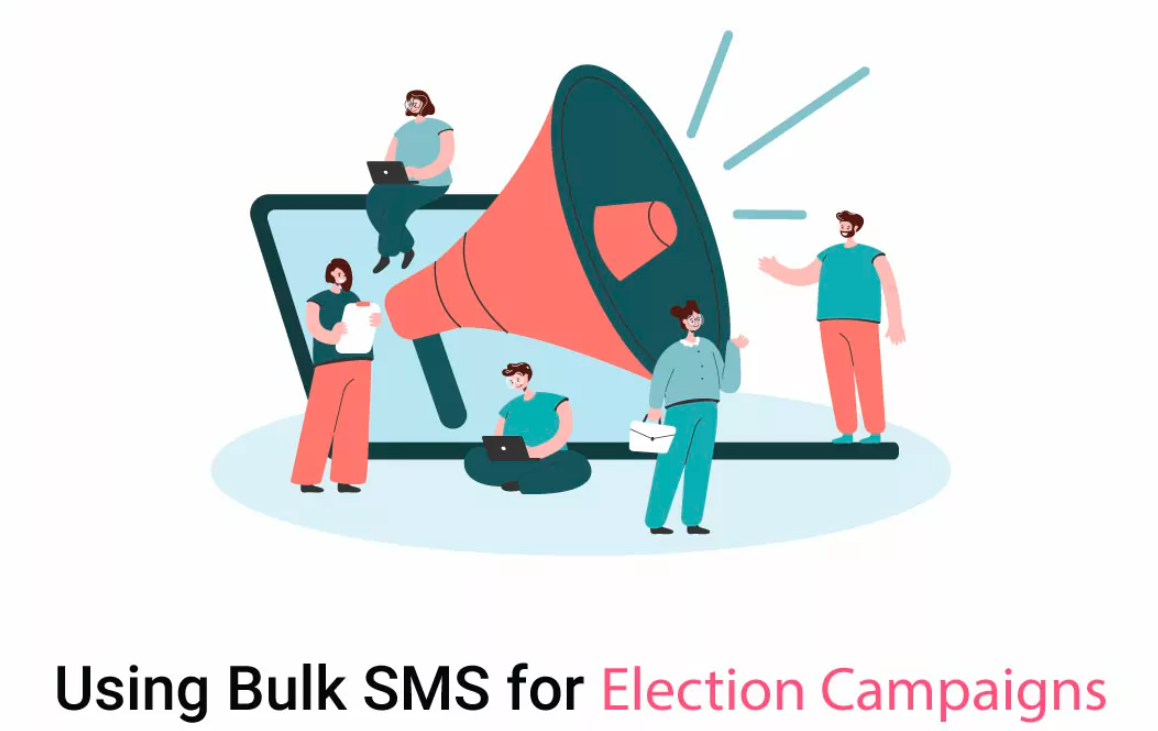Influencer marketing has become a powerful strategy for brands to connect with their target audience through trusted voices. Combining influencer marketing with bulk SMS can significantly amplify campaign reach and effectiveness. This article will explore the role of bulk SMS in influencer marketing campaigns, highlighting how this powerful combination can enhance engagement, drive conversions, and build stronger relationships with your audience.
Bulk SMS marketing stands out due to its immediacy and high engagement rates. Unlike emails that may sit unopened in inboxes, text messages are usually read within minutes of being received. This immediacy makes SMS a potent tool for influencer marketing, allowing influencers to connect with their audience directly and efficiently.

Understanding Influencer Marketing
What is Influencer Marketing?
Influencer marketing involves collaborating with individuals who have a significant following on social media platforms to promote products or services. These influencers leverage their credibility and reach to endorse brands, creating authentic connections with their audience.
The Rise of Influencer Marketing
The rise of social media platforms has given birth to a new era of influencers who have the power to sway public opinion and consumer behavior. Brands are increasingly recognizing the value of influencer marketing, investing in partnerships that can deliver targeted and impactful campaigns.
Historical Context
Influencer marketing has its roots in celebrity endorsements, but the advent of social media has democratized influence, allowing everyday individuals to build substantial followings. This shift has made influencer marketing more accessible and effective for brands of all sizes.
Current Trends in Influencer Marketing
Current trends in influencer marketing include micro-influencers, authentic content, and cross-channel campaigns. Micro-influencers, with smaller but highly engaged followings, are becoming popular for their authenticity. Brands are also focusing on creating genuine, relatable content and integrating influencer marketing across multiple channels for a cohesive strategy.
The Power of Bulk SMS in Influencer Marketing Campaigns
Immediacy and High Open Rates
Bulk SMS marketing boasts high open rates, often exceeding 90%, making it an ideal channel for influencer marketing. The immediacy of SMS ensures that messages are read almost instantly, allowing influencers to capitalize on time-sensitive promotions and updates.
- Real-Time Delivery: SMS messages are delivered instantly, ensuring that followers receive updates and promotions promptly.
- High Visibility: With high open rates, SMS messages are more likely to be seen and acted upon compared to other communication channels.
- Direct Communication: SMS provides a direct line of communication between influencers and their audience, enhancing the personal connection.
Personalization and Relevance
Personalized messages resonate more with recipients and can significantly boost engagement. Influencers can leverage bulk SMS to send tailored messages that align with their followers’ preferences and interests.
- Customized Content: Tailor messages to individual preferences, creating a more personalized and engaging experience.
- Relevant Promotions: Send promotions that are relevant to the recipient’s interests and behaviors, increasing the likelihood of conversion.
- Personal Greetings: Address recipients by name and personalize messages to enhance the connection.
Creating Urgency and Exclusivity
Bulk SMS is an effective tool for creating a sense of urgency and exclusivity, which can drive immediate action. Influencers can use SMS to promote limited-time offers, exclusive discounts, and early access to products or events.
- Limited-Time Offers: Create a sense of urgency with time-sensitive promotions that prompt immediate action.
- Exclusive Discounts: Offer exclusive discounts to SMS subscribers, creating a sense of privilege and loyalty.
- Early Access: Provide early access to new products or events, making followers feel special and valued.
Enhancing Engagement and Interaction
Bulk SMS can enhance engagement and interaction between influencers and their audience. By providing real-time updates, personalized content, and exclusive offers, influencers can foster a stronger connection with their followers.
- Interactive Campaigns: Use SMS to run interactive campaigns, such as polls, quizzes, and contests, to engage followers.
- Feedback and Surveys: Gather feedback and insights from followers through SMS surveys, enhancing the influencer’s content strategy.
- Event Reminders: Send reminders for upcoming events or live sessions to increase participation and engagement.
Amplifying Campaign Reach
Integrating bulk SMS with influencer marketing can amplify the reach of campaigns, ensuring that promotional messages are delivered directly to followers’ mobile devices. This integration can significantly enhance the overall effectiveness of influencer marketing campaigns.
- Cross-Channel Integration: Combine SMS with other marketing channels, such as social media and email, for a cohesive and amplified campaign.
- Wide Reach: Leverage the wide reach of SMS to ensure that promotional messages are seen by a larger audience.
- Consistent Messaging: Ensure consistent messaging across all channels to reinforce the campaign’s message and increase impact.
Strategies for Leveraging Bulk SMS in Influencer Marketing Campaigns
Crafting Compelling Messages
To maximize the effectiveness of bulk SMS in influencer marketing, it’s essential to craft compelling messages. Keep messages concise, include a clear call-to-action, and ensure the content is relevant to the recipient. Effective SMS messages should grab the recipient’s attention quickly and create a sense of urgency.
- Clear and Concise: Use concise language to convey your message quickly. Avoid unnecessary words and focus on the key points.
- Urgent Language: Use urgent language to create a sense of immediacy. Phrases like “Act now,” “Don’t miss out,” and “Limited time offer” can enhance urgency.
- Strong Call-to-Action: Include a strong and clear call-to-action that prompts immediate action. Make it easy for the recipient to understand what they need to do next.
- Personalization: Personalize the message to make it more relevant and impactful. Use the recipient’s name and tailor the content to their preferences and behaviors.
Timing Your Messages
The timing of your SMS messages can significantly impact their effectiveness. Sending messages at optimal times, such as during lunch breaks or after work hours, can increase the likelihood of engagement. Understanding the habits and preferences of your target audience allows influencers to schedule messages when they are most likely to be read and acted upon.
- Optimal Times: Identify the optimal times to send your messages based on the recipient’s daily routine, work schedule, and time zone.
- Time-Sensitive Offers: Use timing to your advantage by sending time-sensitive offers. Create a sense of urgency with limited-time promotions that prompt immediate action.
- Event Promotions: Schedule messages to coincide with specific events or promotions. Promote upcoming events or special offers that are relevant to the recipient.
- Frequency: Be mindful of the frequency of your messages. Avoid sending too many messages in a short period to prevent overwhelming the recipient.
Segmenting Your Audience
Segmenting your audience allows for more targeted and relevant messaging. By grouping followers based on their preferences and behaviors, influencers can deliver personalized content that resonates with each segment. Segmentation can be based on various factors, including demographics, purchase history, and engagement levels.
- Demographic Segmentation: Segment your audience based on demographic factors such as age, gender, income, and location. Tailor messages to appeal to specific demographic groups.
- Behavioral Segmentation: Analyze your audience’s behavior and segment them based on their actions. Create segments for frequent buyers, recent purchasers, or inactive followers.
- Engagement Levels: Segment your audience based on their engagement levels. Identify highly engaged followers and send them exclusive offers to reward their loyalty.
- Custom Segments: Create custom segments based on your specific campaign needs. Use data to identify unique segments that align with your campaign goals.
Utilizing Automation Tools
Automation tools can streamline the execution of your bulk SMS campaign. Automated messages can ensure timely delivery, while analytics can provide insights into campaign performance and follower behavior. Automation allows influencers to send triggered messages based on specific actions or events, such as abandoned cart reminders or limited-time offers.
- Triggered Messages: Set up triggered messages based on specific actions or events. Send automated messages when a follower takes a specific action, such as making a purchase or visiting your website.
- Timely Delivery: Use automation to ensure timely delivery of your messages. Schedule messages to be sent at optimal times based on the recipient’s preferences and behaviors.
- Personalized Content: Use automation to deliver personalized content. Tailor messages based on the recipient’s preferences, purchase history, and engagement levels.
- Analytics: Use automation tools to track key metrics and analyze campaign performance. Gain insights into open rates, click-through rates, and conversion rates to optimize your strategy.
Testing and Optimizing Your Campaign
Before sending your SMS messages to your entire audience, it’s important to test them. A/B testing allows you to compare different versions of a message and determine which one is more effective. Testing different elements such as the content, timing, and call-to-action can help you optimize your messages for better results. Use the insights gained from testing to make data-driven decisions and continuously improve your SMS marketing strategies.
- A/B Testing: Conduct A/B testing to compare different versions of your messages. Test variations in content, timing, and call-to-action to identify the most effective approach.
- Content Testing: Test different content variations to see what resonates best with your audience. Experiment with different offers, wording, and tone to optimize your messages.
- Timing Testing: Test different send times to determine the optimal timing for your messages. Analyze engagement rates at different times of the day to identify the best times to send your messages.
- Call-to-Action Testing: Test different call-to-action variations to see which one prompts the most action. Experiment with different wording, placement, and urgency to optimize your CTAs.
Monitoring Performance and Making Adjustments
Regularly monitoring the performance of your bulk SMS campaign is crucial for maintaining effectiveness. Use analytics to track key metrics such as open rates, click-through rates, and conversion rates. Analyzing this data can provide valuable insights into what is working and what needs to be improved. Be prepared to test different strategies and make adjustments based on the results.
- Open Rates: Track the open rates of your messages to see how many recipients are opening your messages. High open rates indicate that your messages are capturing the recipient’s attention.
- Click-Through Rates: Monitor the click-through rates to see how many recipients are taking action. High click-through rates indicate that your messages are driving engagement.
- Conversion Rates: Analyze the conversion rates to see how many recipients are completing the desired action. High conversion rates indicate that your messages are effective in driving action.
- Engagement Metrics: Track engagement metrics such as reply rates, opt-out rates, and social media shares to gain insights into how recipients are interacting with your messages.
Case Studies: Successful Bulk SMS in Influencer Marketing Campaigns
Example 1: Fashion Influencer Collaboration
A fashion influencer partnered with a clothing brand to promote a limited-edition collection. By using bulk SMS, the influencer sent exclusive early access codes to their followers, creating a sense of urgency and exclusivity. The campaign resulted in a 40% increase in sales for the collection, with many items selling out within hours.
Example 2: Fitness Influencer’s Wellness Program
A fitness influencer used bulk SMS to promote their new wellness program. Subscribers received personalized messages with exclusive discount codes, workout tips, and reminders for upcoming live sessions. The SMS campaign significantly boosted program sign-ups and increased engagement during live sessions.
Example 3: Beauty Influencer’s Product Launch
A beauty influencer collaborated with a skincare brand to launch a new product. The influencer used bulk SMS to send real-time updates and exclusive launch offers to their followers. The campaign achieved a high conversion rate, with the product selling out within the first week of launch.
Example 4: Travel Influencer’s Flash Sale
A travel influencer partnered with a travel agency to promote a flash sale on vacation packages. The influencer sent bulk SMS messages with limited-time offers and exclusive discounts to their followers. The campaign drove a significant increase in bookings, with many followers taking advantage of the time-sensitive deals.
Best Practices for Leveraging Bulk SMS in Influencer Marketing Campaigns
Obtain Consent
Always obtain consent before sending SMS messages to followers. This not only ensures compliance with regulations but also builds trust with your audience. Consent can be obtained through opt-in forms on your website, email campaigns, or social media promotions. Providing a clear explanation of what followers can expect to receive and how often they will receive messages helps set expectations and build trust.
- Opt-In Forms: Create clear and concise opt-in forms that explain the benefits of subscribing to your SMS campaign. Ensure the form is easy to complete and accessible on multiple platforms.
- Double Opt-In: Use a double opt-in process to confirm consent. After initial sign-up, send a confirmation message to verify the follower’s interest.
- Transparency: Be transparent about what followers can expect from your SMS campaign. Explain the frequency and content of messages to set clear expectations.
- Easy Opt-Out: Provide an easy way for followers to opt-out of your SMS campaign. Include opt-out instructions in every message to ensure compliance and maintain trust.
Segment Your Audience
Segmenting your audience allows for more targeted and relevant messaging. By grouping followers based on their preferences and behaviors, you can deliver personalized content that resonates with each segment. Segmentation can be based on various factors, including demographics, purchase history, and engagement levels.
- Demographic Segmentation: Segment your audience based on demographic factors such as age, gender, income, and location. Tailor messages to appeal to specific demographic groups.
- Behavioral Segmentation: Analyze your audience’s behavior and segment them based on their actions. Create segments for frequent buyers, recent purchasers, or inactive followers.
- Engagement Levels: Segment your audience based on their engagement levels. Identify highly engaged followers and send them exclusive offers to reward their loyalty.
- Custom Segments: Create custom segments based on your specific campaign needs. Use data to identify unique segments that align with your campaign goals.
Monitor and Adapt
Regularly monitor the performance of your SMS marketing campaigns and be prepared to adapt your strategies based on the insights gained. Continuous improvement is key to maintaining effective SMS marketing efforts. Use analytics to track key metrics such as open rates, click-through rates, and conversion rates. Analyzing this data can provide valuable insights into what is working and what needs to be improved. Be prepared to test different strategies and make adjustments based on the results.
- Open Rates: Track the open rates of your messages to see how many recipients are opening your messages. High open rates indicate that your messages are capturing the recipient’s attention.
- Click-Through Rates: Monitor the click-through rates to see how many recipients are taking action. High click-through rates indicate that your messages are driving engagement.
- Conversion Rates: Analyze the conversion rates to see how many recipients are completing the desired action. High conversion rates indicate that your messages are effective in driving action.
- Engagement Metrics: Track engagement metrics such as reply rates, opt-out rates, and social media shares to gain insights into how recipients are interacting with your messages.
Keep Messages Short and Sweet
Given the character limitations of SMS messages, it’s important to keep them short and to the point. Avoid unnecessary jargon and get straight to the point. The message should be easy to read and understand, with a clear call-to-action that encourages the recipient to take the desired action. Using concise language also ensures that the message fits within the character limit, making it more likely to be read in its entirety.
- Concise Language: Use concise and clear language to convey your message. Avoid unnecessary words and focus on the key points.
- Relevant Content: Ensure the content is relevant to the recipient. Personalize the message based on the recipient’s preferences and behaviors.
- Clear CTA: Include a clear and compelling call-to-action. Make it easy for the recipient to understand what they need to do next.
- Engaging Tone: Use an engaging tone that resonates with your audience. Make the message personal and relatable.
Include a Clear Call-to-Action
Every SMS message should include a clear call-to-action that tells the recipient what to do next. Whether it’s clicking a link, redeeming a discount code, or visiting a store, the call-to-action should be clear and compelling. Providing a sense of urgency can also enhance the effectiveness of the call-to-action. For example, phrases like “Limited time offer!” or “Shop now before it’s gone!” can encourage immediate action.
- Direct CTA: Use clear and direct language for your call-to-action. Avoid ambiguity and make it clear what action you want the recipient to take.
- Urgency: Create a sense of urgency to encourage immediate action. Use time-sensitive language to prompt recipients to act quickly.
- Benefits: Highlight the benefits of taking action. Explain what the recipient will gain by following the call-to-action.
- Simplicity: Ensure the call-to-action is easy to follow. Include clear instructions and remove any barriers to taking action.
Personalize Messages
Personalization is a key component of effective SMS marketing. By addressing recipients by name and tailoring the content to their preferences and behaviors, businesses can create a more engaging and relevant experience. Personalization can include customized offers based on past purchases, location-based promotions, and personalized greetings. The more personalized the message, the more likely it is to resonate with the recipient and drive action.
- Name Personalization: Address recipients by name to create a personal connection. Use dynamic fields to insert the recipient’s name into the message.
- Purchase History: Tailor offers based on the recipient’s purchase history. Recommend products or services that align with their past purchases.
- Location-Based Promotions: Use location data to send relevant offers. Promote local events or offers that are specific to the recipient’s location.
- Special Occasions: Send personalized messages for special occasions, such as birthdays or anniversaries. Offer exclusive discounts or promotions to celebrate the event.
Test and Optimize
Testing different elements of your SMS messages, such as the content, timing, and call-to-action, can help you optimize your campaigns for better results. A/B testing allows you to compare different versions of a message and determine which one is more effective. Use the insights gained from testing to make data-driven decisions and continuously improve your SMS marketing strategies.
- A/B Testing: Conduct A/B testing to compare different versions of your messages. Test variations in content, timing, and call-to-action to identify the most effective approach.
- Content Testing: Test different content variations to see what resonates best with your audience. Experiment with different offers, wording, and tone to optimize your messages.
- Timing Testing: Test different send times to determine the optimal timing for your messages. Analyze engagement rates at different times of the day to identify the best times to send your messages.
- Call-to-Action Testing: Test different call-to-action variations to see which one prompts the most action. Experiment with different wording, placement, and urgency to optimize your CTAs.
Ensure Compliance
Compliance with regulations is crucial in SMS marketing. Ensure that you have obtained consent from recipients before sending messages and provide an easy way for them to opt out. Familiarize yourself with regulations such as the Telephone Consumer Protection Act (TCPA) and the General Data Protection Regulation (GDPR) to ensure that your SMS marketing practices are compliant. Non-compliance can result in legal penalties and damage to your brand’s reputation.
- Regulatory Awareness: Stay informed about the latest regulations and guidelines for SMS marketing. Regularly review your compliance processes to ensure they are up-to-date.
- Consent Management: Maintain accurate records of consent to ensure compliance. Use opt-in forms and double opt-in processes to confirm consent.
- Opt-Out Processes: Provide clear and easy ways for recipients to opt-out of your SMS campaign. Include opt-out instructions in every message to ensure compliance and maintain trust.
- Data Protection: Implement data protection measures to safeguard recipient information. Use encryption and secure storage methods to protect data from unauthorized access.
Maintain Consistency
Consistency is important in SMS marketing. Regular and consistent communication helps keep your brand top-of-mind for customers. However, it’s important to strike a balance and avoid overwhelming recipients with too many messages. Establish a regular cadence for sending messages and stick to it, while also being mindful of the frequency and relevance of the content.
- Regular Cadence: Establish a regular schedule for sending messages. Consistent communication helps keep your brand top-of-mind for customers.
- Frequency Management: Be mindful of the frequency of your messages. Avoid sending too many messages in a short period to prevent overwhelming the recipient.
- Relevance: Ensure the content of your messages is relevant to the recipient. Personalize the messages based on their preferences and behaviors.
- Brand Voice: Maintain a consistent brand voice across all messages. Ensure the tone and style of your messages align with your brand identity.
Conclusion
Combining bulk SMS with influencer marketing can significantly enhance the reach and effectiveness of your campaigns. By leveraging the immediacy and high open rates of SMS, influencers can create a sense of urgency and drive immediate action. As you implement these insights, remember to keep your messages personalized, timely, and value-driven to create meaningful connections with your followers. Start harnessing the power of bulk SMS in your influencer marketing campaigns today and see the impact it can have on your brand.
The key to successful bulk SMS in influencer marketing lies in understanding the unique strengths of each channel and leveraging them to create engaging and relevant messages. By focusing on personalization, immediacy, and urgency, influencers can build strong connections with their audience and drive higher engagement and conversion rates.









